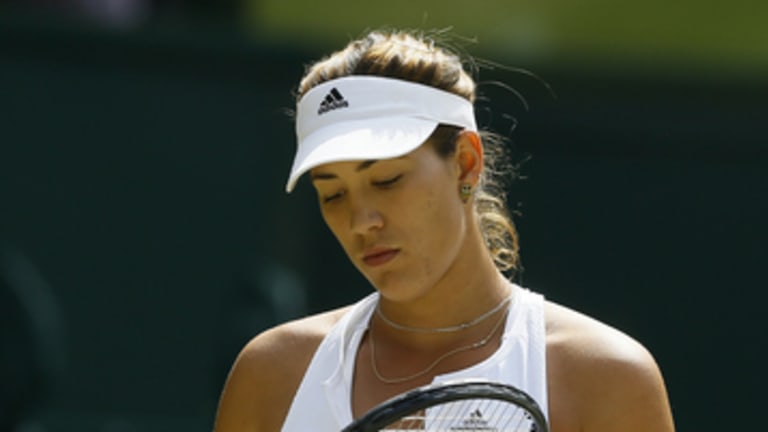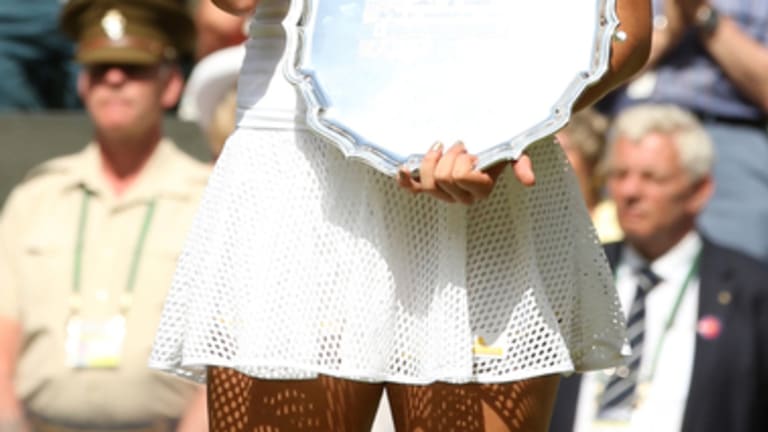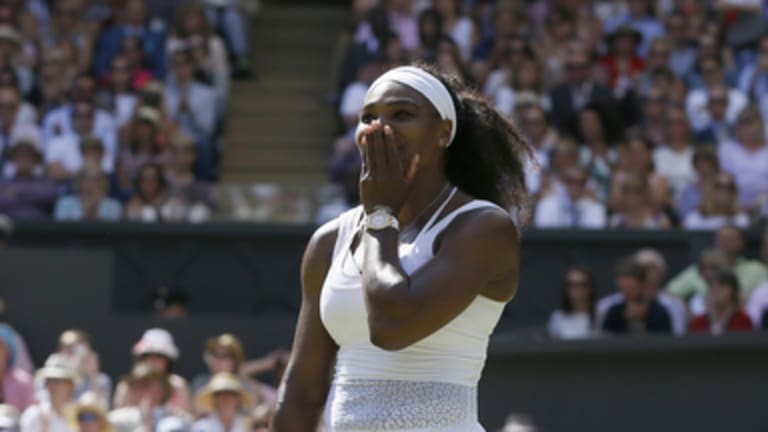Garbine Muguruza led Serena Williams 4-3, 15-0 in the first set when she stepped to the middle of Centre Court to hit a forehand. It was the kind of shot that she had been putting away routinely for the last two weeks, and for the first 30-odd minutes on Saturday. The 21-year-old Muguruza, to the surprise of many—but not to her or her opponent—had come out for her first major final and taken the initiative from the world’s best player. It was Muguruza, not Williams, who was swinging freely and aggressively, and who recorded the first service break. It was Williams, not Muguruza, who was so worried about her opponent’s powerful return that she double-faulted three times in her first service game.
Now, though, as Muguruza stepped forward for that forehand at 4-3, she could begin to see the outlines of the first-set finish line. She may have walked on court expecting to play well against Serena, but winning? That’s another level of belief entirely. Whatever Muguruza thought, she thought it for a split-second too long. She hesitated with her swing; instead of rocketing a winner, she blooped the ball back, well within her opponent’s reach.
That, it turned out, was all Serena needed. She was behind the baseline and ready to play a defensive shot; most other players in that situation would have just tried to get the ball over the net. But that was never going to be the Serena way. This was a chance not just to make a shot, but to send a little piece of information down to the woman at the other end of the court. Serena changed her stance and ripped a forehand crosscourt. Muguruza couldn’t handle the pace, and, it was soon clear, she couldn’t handle the information that Serena was imparting. Muguruza lost that point, her serve, the set, and eight of the next nine games.
“The first six games were really tough,” Serena’s coach, Patrick Mouratoglou told ESPN afterward. “She expected Garbine to be aggressive on second serves, she started to double fault and lost confidence in her biggest weapon.”
When Serena ripped that forehand after Muguruza’s mishit, Mouratoglou also understood what she was trying to say. It was music to his ears. To him, a match with Serena is never about what the score is at a given moment, or how her opponent is playing. It’s all about where she is mentally and how she’s feeling.
“Serena sent a message,” Mouratoglou said of that forehand at 4-3. “‘Now I’m here.’”


